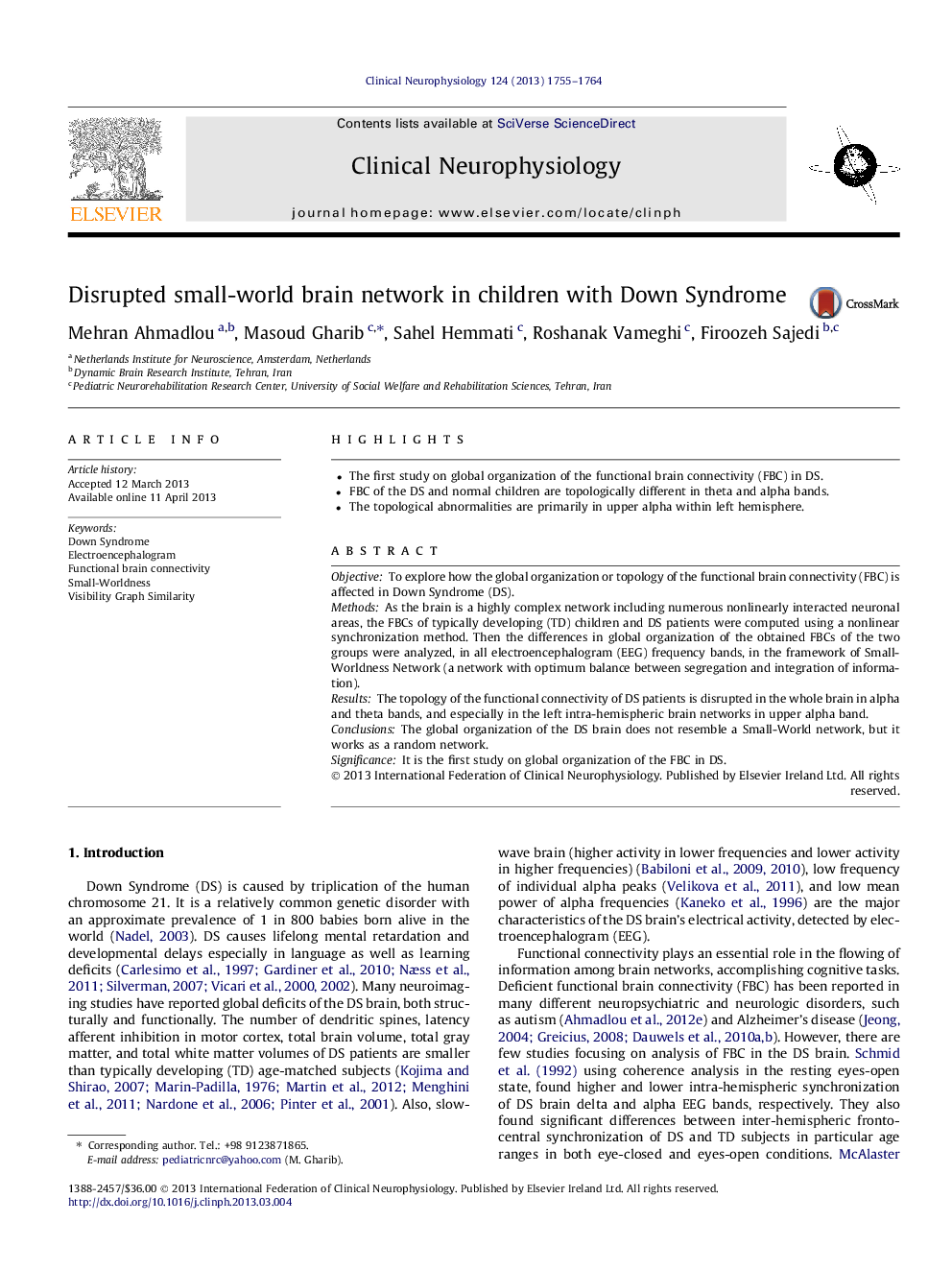| Article ID | Journal | Published Year | Pages | File Type |
|---|---|---|---|---|
| 6008974 | Clinical Neurophysiology | 2013 | 10 Pages |
â¢The first study on global organization of the functional brain connectivity (FBC) in DS.â¢FBC of the DS and normal children are topologically different in theta and alpha bands.â¢The topological abnormalities are primarily in upper alpha within left hemisphere.
ObjectiveTo explore how the global organization or topology of the functional brain connectivity (FBC) is affected in Down Syndrome (DS).MethodsAs the brain is a highly complex network including numerous nonlinearly interacted neuronal areas, the FBCs of typically developing (TD) children and DS patients were computed using a nonlinear synchronization method. Then the differences in global organization of the obtained FBCs of the two groups were analyzed, in all electroencephalogram (EEG) frequency bands, in the framework of Small-Worldness Network (a network with optimum balance between segregation and integration of information).ResultsThe topology of the functional connectivity of DS patients is disrupted in the whole brain in alpha and theta bands, and especially in the left intra-hemispheric brain networks in upper alpha band.ConclusionsThe global organization of the DS brain does not resemble a Small-World network, but it works as a random network.SignificanceIt is the first study on global organization of the FBC in DS.
